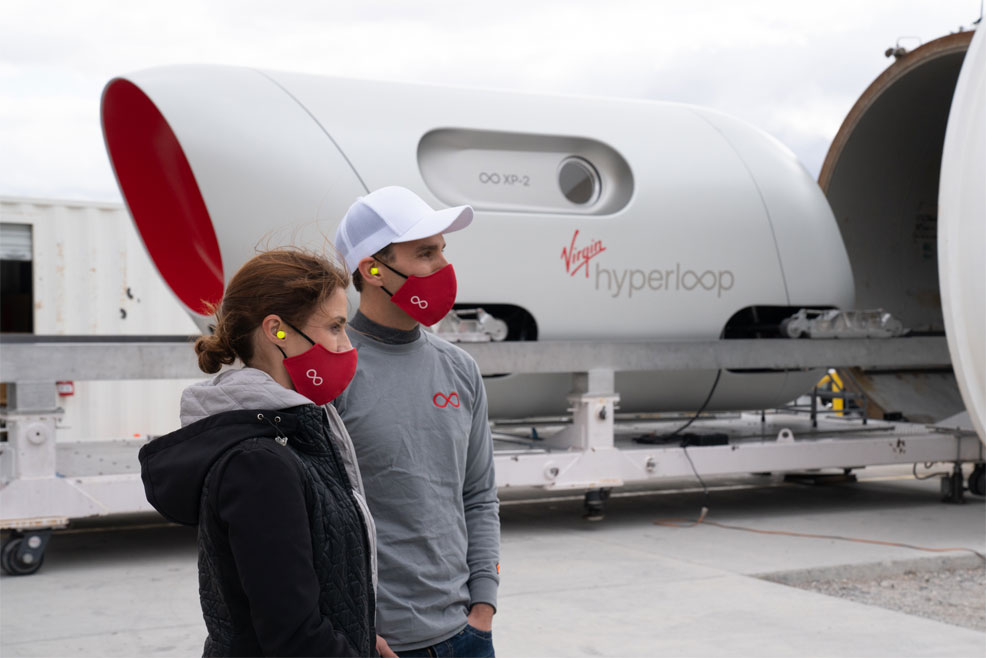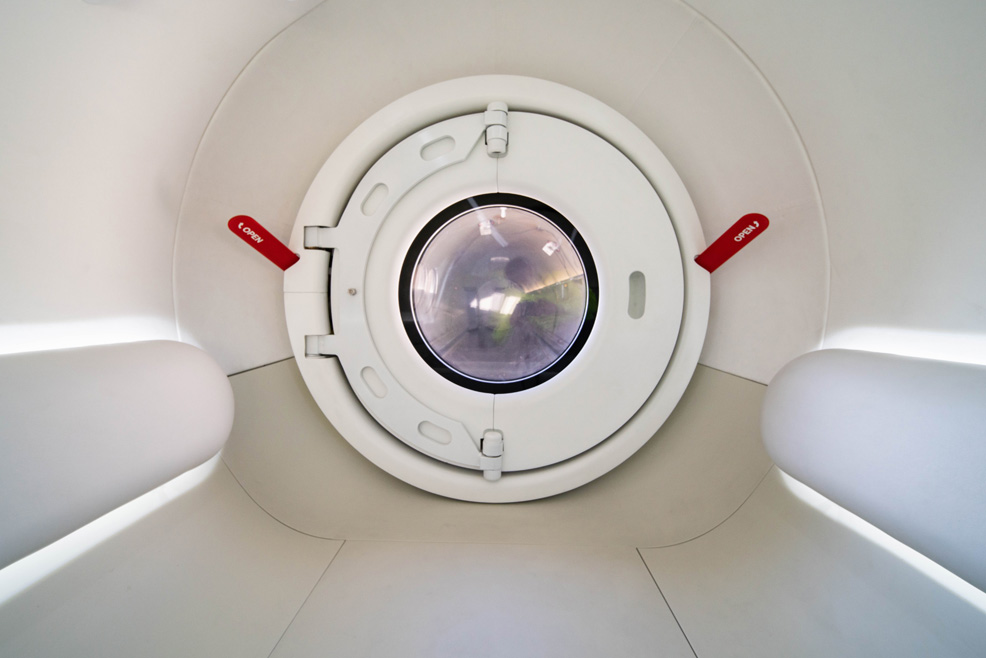
9th November 2020 First passengers travel safely on a Hyperloop In the Nevada desert yesterday, Virgin Hyperloop tested human travel in a Hyperloop pod for the first time.
"For the past few years, the Virgin Hyperloop team has been working on turning its groundbreaking technology into reality," said Sir Richard Branson, Founder of the Virgin Group. "With today's successful test, we have shown that this spirit of innovation will in fact change the way people everywhere live, work, and travel in the years to come." Josh Giegel and Sara Luchian, pictured above, became the first people in the world to ride on this new form of transportation. The test took place at Virgin Hyperloop's 500 metre (1640 ft) DevLoop test site in Las Vegas, where the company has previously run over 400 unoccupied tests. "When we started in a garage over six years ago, the goal was simple – to transform the way people move," said Giegel, Co-Founder and Chief Technology Officer of Virgin Hyperloop. "Today, we took one giant leap toward that ultimate dream, not only for me, but for all of us who are looking towards a moonshot right here on Earth." "Hyperloop is about so much more than the technology. It's about what it enables," said Luchian, Director of Passenger Experience for Virgin Hyperloop. "To me, the passenger experience ties it all together. And what better way to design the future than to actually experience it first-hand?" The occupants took their maiden voyage on the newly-unveiled XP-2 vehicle – designed by Bjarke Ingels Group (BIG) and Kilo Design – which is custom-built with occupant safety and comfort in mind. While the production vehicle will be larger and seat up to 28 passengers, this two-seater XP-2 prototype was built to demonstrate that passengers can in fact safely travel in a Hyperloop vehicle. The levitating pod system in this trial reached a top speed of 107 mph (172 km/h). Future versions are expected to hurtle through vacuum tubes at more than 600 mph (966 km/h) – faster than most commercial airliners.
The testing campaign, from the beginning stages all the way through to yesterday's successful demonstration, was overseen by the industry-recognised Independent Safety Assessor (ISA) Certifer. Having undergone a rigorous and exhaustive safety process, the XP-2 vehicle demonstrates many of the safety-critical systems that will be found on a commercial Hyperloop system, and is equipped with a state-of-the-art control system that can detect off-nominal states and rapidly trigger appropriate emergency responses. "I can't tell you how often I get asked 'is Hyperloop safe?'," said Jay Walder, CEO of Virgin Hyperloop. "With today's passenger testing, we have successfully answered this question – demonstrating that not only can Virgin Hyperloop safely put a person in a pod in a vacuum environment, but that the company has a thoughtful approach to safety which has been validated by an independent third party." This announcement builds on significant momentum on the regulatory front. Just last month, Virgin Hyperloop unveiled West Virginia as the location for the Hyperloop Certification Center (HCC). In July 2020, the US Department of Transportation Secretary, Elaine Chao, and the Non-Traditional and Emerging Transportation Technology Council unveiled a guidance document on a clear regulatory framework for Hyperloop in the United States. This historic announcement not only provides a pathway for Hyperloop regulation and deployment in the US, but also establishes federal funding eligibility for projects. The Virgin Hyperloop team hope this federal momentum, combined with advancements at the HCC and the historic safety demonstration achieved with this test will pave the way for certification of Hyperloop systems around the world – a major step towards commercial projects. The company is working towards safety certification by 2025 and full commercial operations by 2030.
--- Follow us: Twitter | Facebook | Instagram | YouTube
Comments »
If you enjoyed this article, please consider sharing it:
|








